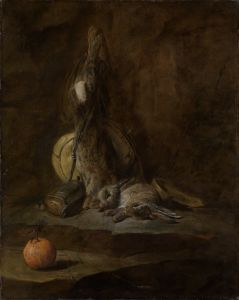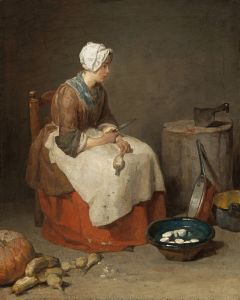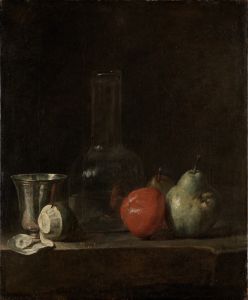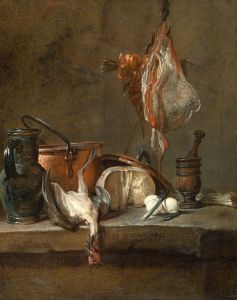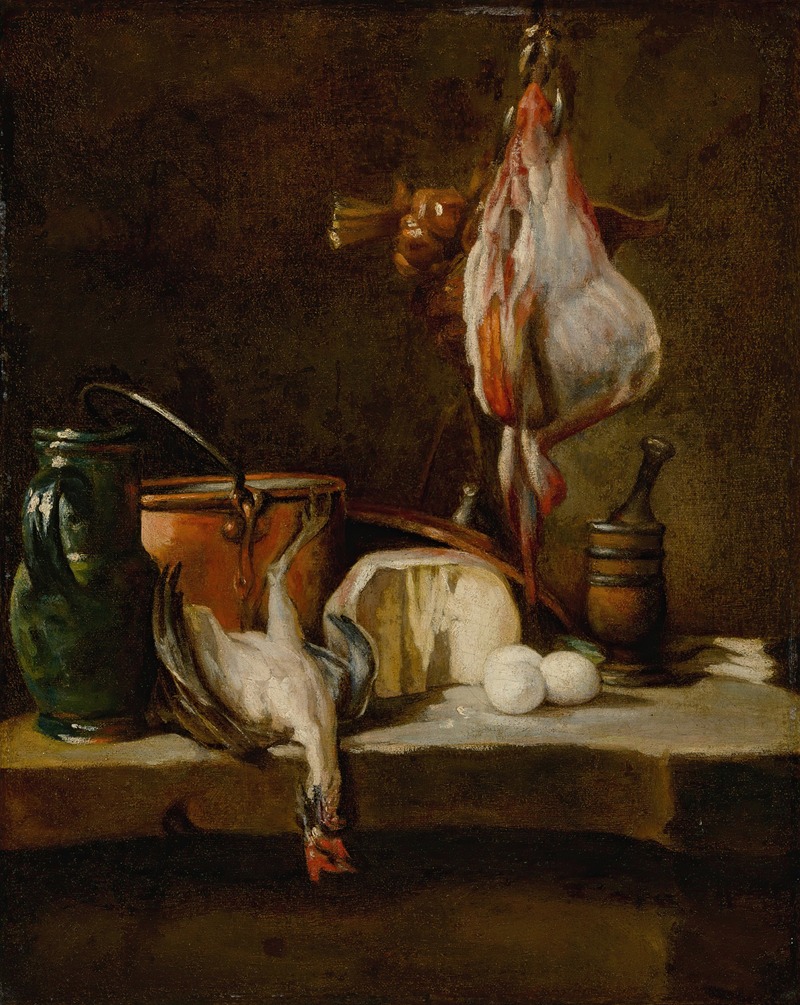
Still Life with a ray-fish, a basket of onions, eggs, cheese, a green jug and a copper pot
A hand-painted replica of Jean Siméon Chardin’s masterpiece Still Life with a ray-fish, a basket of onions, eggs, cheese, a green jug and a copper pot, meticulously crafted by professional artists to capture the true essence of the original. Each piece is created with museum-quality canvas and rare mineral pigments, carefully painted by experienced artists with delicate brushstrokes and rich, layered colors to perfectly recreate the texture of the original artwork. Unlike machine-printed reproductions, this hand-painted version brings the painting to life, infused with the artist’s emotions and skill in every stroke. Whether for personal collection or home decoration, it instantly elevates the artistic atmosphere of any space.
Jean Siméon Chardin's "Still Life with a Ray-Fish, a Basket of Onions, Eggs, Cheese, a Green Jug and a Copper Pot" is a remarkable example of 18th-century French still life painting. Chardin, born in Paris in 1699, is celebrated for his ability to transform everyday objects into subjects of profound beauty and contemplation. This painting, like many of Chardin's works, showcases his mastery in depicting the textures and surfaces of various materials, as well as his skillful use of light and shadow.
The composition of the painting is carefully arranged to guide the viewer's eye across the canvas. At the center of the piece is the ray-fish, its unique texture and form rendered with meticulous attention to detail. The fish's placement is both central and slightly off-balance, creating a dynamic tension within the composition. Surrounding the ray-fish are a basket of onions, eggs, cheese, a green jug, and a copper pot, each object contributing to the overall harmony of the scene.
Chardin's use of color is subtle yet effective. The muted tones of the onions and the earthy hues of the cheese and jug are contrasted by the metallic sheen of the copper pot, which reflects light in a way that adds depth to the painting. The eggs, with their smooth, rounded forms, provide a visual counterpoint to the more complex textures of the other objects. Chardin's palette is restrained, yet it captures the essence of each item with remarkable fidelity.
One of the defining characteristics of Chardin's still lifes is his ability to imbue inanimate objects with a sense of life and presence. In "Still Life with a Ray-Fish," this is achieved through the careful observation of the objects' physical properties and the interplay of light and shadow. The painting invites viewers to appreciate the beauty of the mundane, encouraging a deeper reflection on the nature of everyday life.
Chardin's work was highly regarded during his lifetime, and he was admitted to the prestigious Académie Royale de Peinture et de Sculpture in 1728. His still lifes were particularly admired for their realism and the artist's ability to elevate simple subjects to the level of fine art. "Still Life with a Ray-Fish" exemplifies these qualities, showcasing Chardin's talent for capturing the quiet dignity of ordinary objects.
Today, Chardin's paintings are celebrated for their timeless appeal and their influence on later generations of artists. His approach to still life painting, characterized by a focus on composition, texture, and the subtle play of light, continues to inspire and captivate audiences. "Still Life with a Ray-Fish, a Basket of Onions, Eggs, Cheese, a Green Jug and a Copper Pot" remains a testament to Chardin's enduring legacy as one of the great masters of still life.






